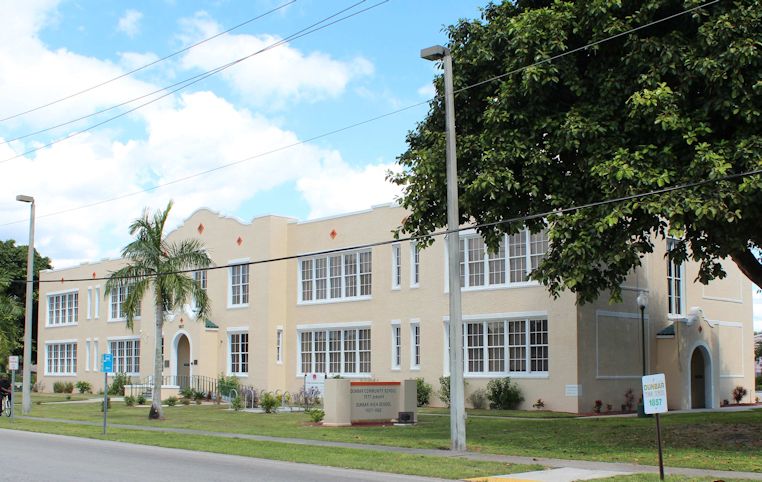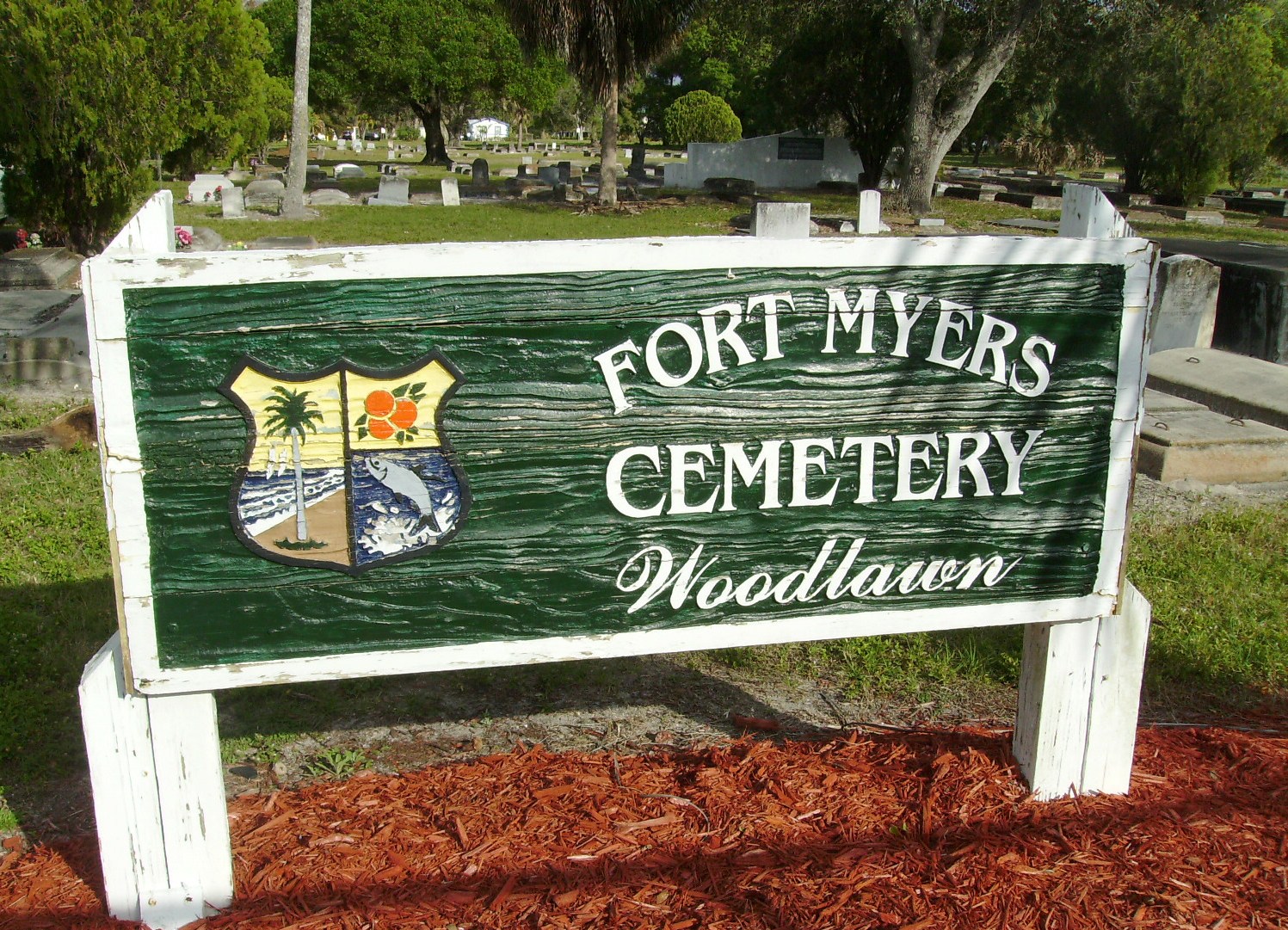McCollum Hall
 McCollum Hall was built ca. 1938 by black businessman and entrepreneur Clifford McCollum Sr. and his wife Gertrude as a commercial and recreational building for the Dunbar community. McCollum Hall, located at the northeast corner of Cranford Avenue and Dr. Martin Luther King Jr. Boulevard, was considered at one time to be located in the heart of the Dunbar community. Dunbar’s community social celebrations were a large part of the significance of McCollum Hall.
McCollum Hall was built ca. 1938 by black businessman and entrepreneur Clifford McCollum Sr. and his wife Gertrude as a commercial and recreational building for the Dunbar community. McCollum Hall, located at the northeast corner of Cranford Avenue and Dr. Martin Luther King Jr. Boulevard, was considered at one time to be located in the heart of the Dunbar community. Dunbar’s community social celebrations were a large part of the significance of McCollum Hall.
McCollum Hall also served as the USO for black service men stationed at Page and Buckingham Air Fields. The second floor housed the renowned “dance hall” and for almost two decades was a popular entertainment location for many famous musicians and entertainers. Many nationally famous blacks including Duke Ellington, Count Basie, Louis Armstrong, and B.B. King performed at McCollum Hall which was part of the “Chitlin’ Circuit”, a name commonly used to refer to the places across the country where black entertainers performed during segregation.
The dance hall continued in operation until the late 1970’s catering more to the teenagers of the community. In the mid-1980’s, the second floor was changed to a rooming house. McCollum Hall was determined to be eligible for listing in the National Register of Historic Places in a report prepared May 19, 1994 by Archaeological Consultants, Inc.
The Beauty Box
This site is the location of one of the first beauty salons in the Dunbar community. The structure built ca. 1926, was originally a residential structure but through the years it was changed to a commercial use. Sadly, the building that housed The Beauty Box was razed in early 2008; the land is now open.
Etta Powells
The small wood frame house at 2764 Lime Street was the family home of Charlie and Etta Powell. In the 1950’s, the family rented rooms to black professional baseball players in town for spring training. During the 1950’s, there were no hotels in the area which provided lodging to blacks. The Powell home was one of several private residences in the Dunbar community that provided lodging for many black baseball players.
 The photograph shows Roberto Clemente jumping for a fly ball at Terry Park, an act he completed countless times between 1955, his rookie season, and 1968, the Pittsburgh Pirates’ final spring training in Fort Myers.
The photograph shows Roberto Clemente jumping for a fly ball at Terry Park, an act he completed countless times between 1955, his rookie season, and 1968, the Pittsburgh Pirates’ final spring training in Fort Myers.
Clemente arrived in Fort Myers with no fame and no right to stay with the rest of his teammates because of his dark complexion. While the white players lived in the Bradford Hotel downtown, Clemente began his career by living with Etta and Charlie Powell at 2764 Lime St. They lived in a Dunbar neighborhood known as “The Bottom.”
The address no longer exists. The house has been razed and replaced. Etta Powell died at age 84 in 1987. Charlie Powell died years earlier. The Powells had no children. Their best mutual friend, Fort Myers native Pat McCutcheon, died last year at the age of 90.
Dunbar Community School
 Dunbar High School was built in 1926 at a cost of $99,000 and was partly financed by black citizens in Lee County. (It was an atypical Rosenwald School). The school was located at the corner of High and Blount Streets in the heart of the black community. It was named for the renowned black poet Paul Laurence Dunbar. The building’s layout was copied from architectural plans prepared for a white school built across town called Edison Park Elementary. It saved the school board money because another set of architectural plans did not have to be commissioned.
Dunbar High School was built in 1926 at a cost of $99,000 and was partly financed by black citizens in Lee County. (It was an atypical Rosenwald School). The school was located at the corner of High and Blount Streets in the heart of the black community. It was named for the renowned black poet Paul Laurence Dunbar. The building’s layout was copied from architectural plans prepared for a white school built across town called Edison Park Elementary. It saved the school board money because another set of architectural plans did not have to be commissioned.
Prior to the opening of Dunbar High School, public education for black children in Lee County was limited to the eighth grade. With the opening of Dunbar, black students could now receive four years of high school education. Black students throughout Lee County including Sanibel and Charleston Park were bused to Dunbar. Because there were no black high schools in Charlotte and Collier Counties black students in these counties were also bussed to Dunbar until 1962.
The school became the hub of activity in the black community. In 1962, a new Dunbar High School was built on Edison Avenue. The original Dunbar High School became Dunbar Junior High from 1962 to 1964. In the fall of 1964, seventh and eighth grades joined the other high school students at the new Dunbar High School located at Edison Avenue. The school building at High and Blount has been utilized for various educational functions over the years. At the beginning of desegregation in the 1970’s, the school became a center for seventh grade students and was renamed Dunbar Community School. Later, the school became a center for adult and community education.
The 1942 addition to the Williams Academy
 The building known as the 1942 Addition to the Williams Academy is currently located at Clemente Park on Henderson Avenue. It is the remnant of a 1942 addition to the original 1913 Williams Academy structure. Williams Academy was the first government-funded school for black students in Fort Myers. The original two-story building was located at the corner of Anderson and Cranford Avenues. Classes went from first to eighth grades. The building was moved to the Dunbar High School site on Blount Street between 1935 and 1937. When Dunbar High School was opened in 1927, the Williams Academy was renamed Williams Primary and used for first and second grade classes.
The building known as the 1942 Addition to the Williams Academy is currently located at Clemente Park on Henderson Avenue. It is the remnant of a 1942 addition to the original 1913 Williams Academy structure. Williams Academy was the first government-funded school for black students in Fort Myers. The original two-story building was located at the corner of Anderson and Cranford Avenues. Classes went from first to eighth grades. The building was moved to the Dunbar High School site on Blount Street between 1935 and 1937. When Dunbar High School was opened in 1927, the Williams Academy was renamed Williams Primary and used for first and second grade classes.
The architecture of the building reflects the vernacular construction of the era. It remains generally in its original plan. The building represents the value that Lee County placed on black education in 1942 and provides a visual comparison with facilities provided to the white students. It serves to remind the community of past inequities in education, which should not be allowed to recur.
The Williams Primary School portion was dismantled in 1958 and the 1942 addition remained as a stand-alone building, serving variously as a band/chorus building, day care center, and migrant health clinic. It was covered with aluminum siding in the mid 1980’s. From then until its relocation to Clemente Park in 1995, the building was used exclusively for storage by the Lee County School District.
In November 1994, the Lee County School Board slated the building for demolition to make room for a parking lot. The Lee County Black History Society, Inc. (LCBHS) acquired the building from the school district on the condition that LCBHS move the building from its location on the Dunbar Community School property. The LCBHS moved the building to present location. Clemente Park has served various functions in the Dunbar community through the years. The park in addition to serving as a recreational facility was also a senior retirement facility for black citizens when such facilities were still segregated. The park also housed a counseling center and the first library for Dunbar community.
Woodlawn & Oakridge of the City of Fort Myers Cemetery

For many years, there were two distinct sections of Fort Myers’ Cemetery used exclusively for black burials. The Woodlawn Section is located on the east side of Henderson Avenue, just north of “C” Street. City records indicate Woodlawn was established in 1915. Oakridge is directly across the street from Woodlawn on the west side of Henderson Avenue and was established in 1943. Both cemetery sections are approximately acres in size. The black cemetery sections lack any distinct entry feature or marker and are located at a significant distance from the once exclusive white cemetery to the north.
The black cemetery sections were situated in the middle of the block with a dirt path for access. The cemetery’s random location, lack of identification and limited access was typical of black cemeteries in segregated communities.
Many prominent black residents and community leaders are buried in the Woodlawn and Oakridge Sections of Fort Myers Cemetery. The family plot of Dr. Ella Piper, a local philanthropist and podiatrist is located in the Woodlawn cemetary.

